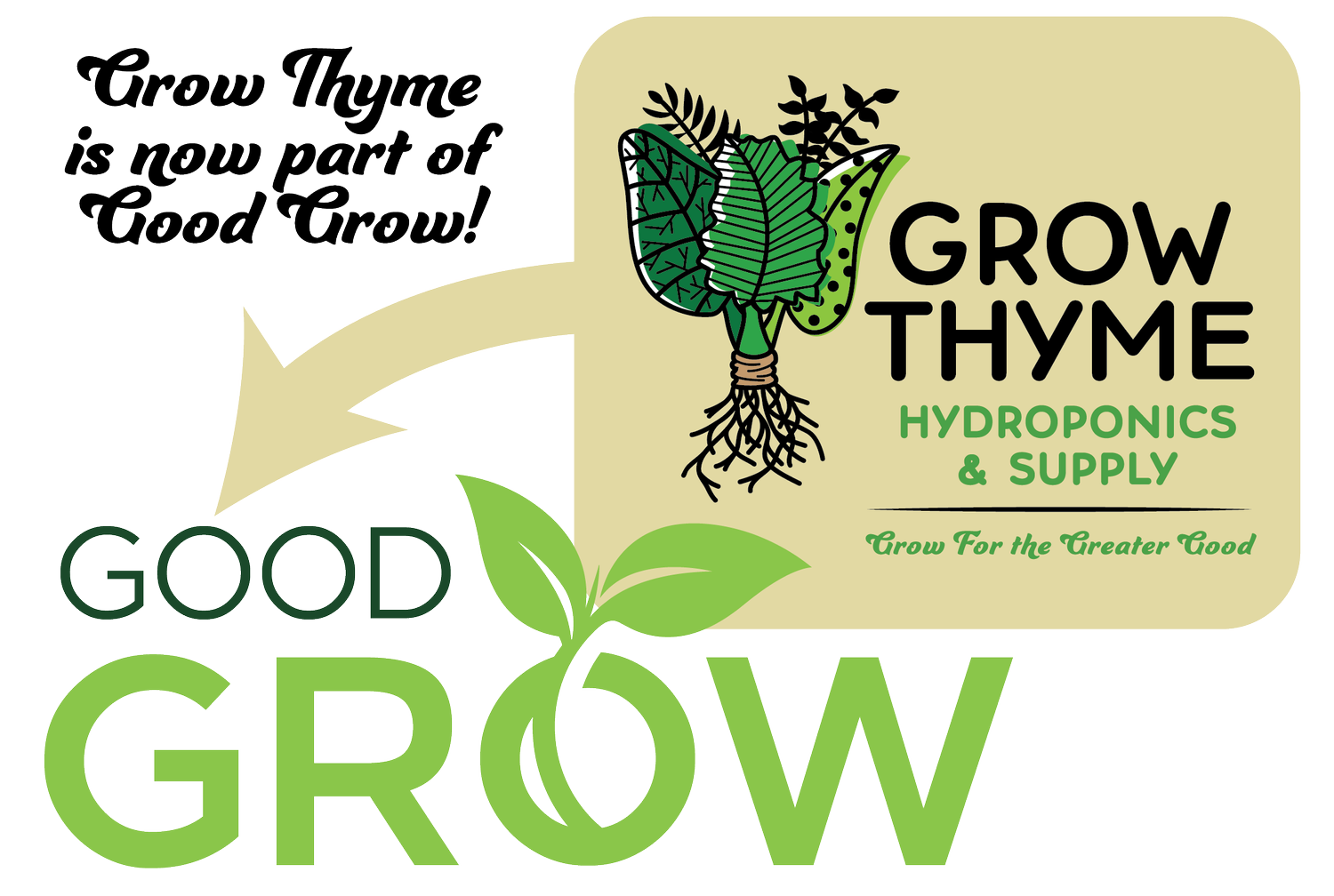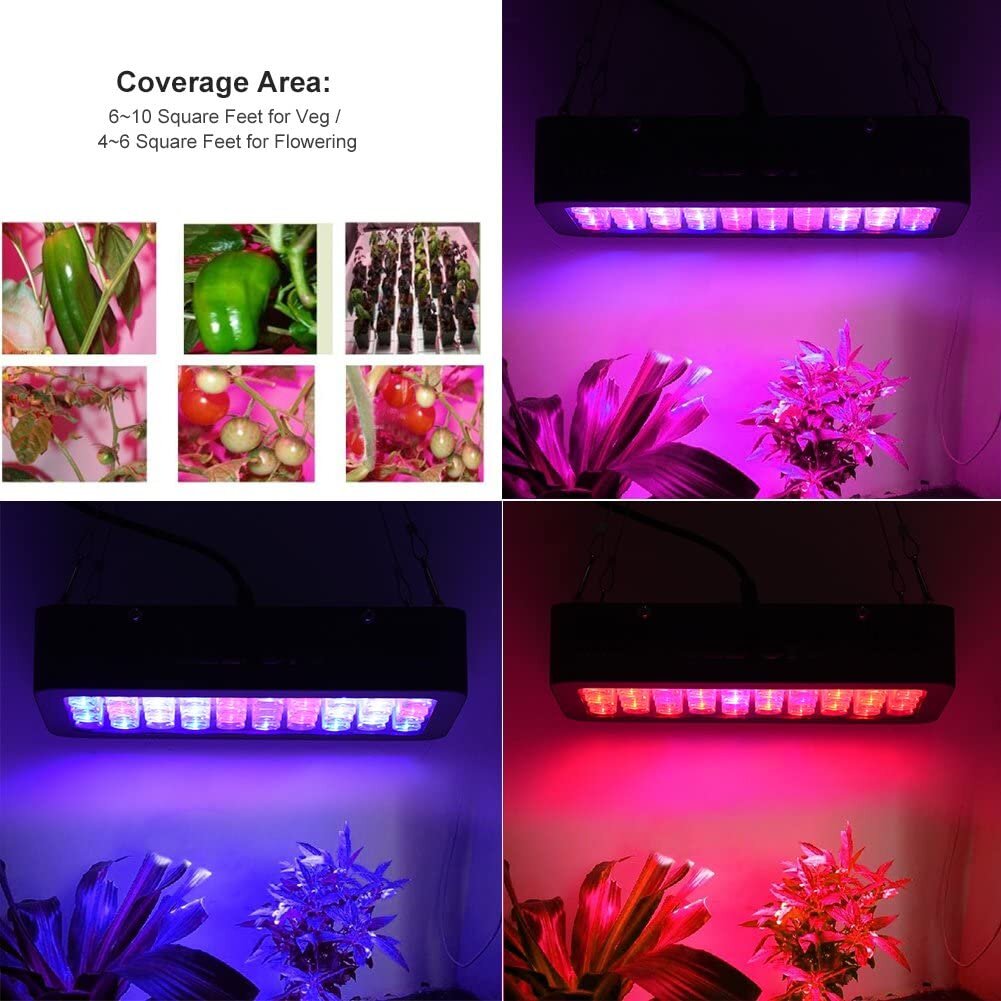Hydroponic Lighting Essentials
Russian botanist Andrei Famintsyn was the first to use artificial light for plant growing and research (1868).
The two main types of fluorescent lights used for growing plants are the tube-style lights and compact fluorescent lights. These are beginner-friendly grow lights that are cheap to purchase and they don’t give off a lot of heat. This makes fluorescent lights great for seedlings and young plants. Since there isn’t much heat you can place them close to the plants without risking tip burn or wilting.
CFL’s can oftentimes be plugged into any normal home lamp socket for easy growing. Fluorescent lights come in many different spectrums yet still run on minimal electricity, so you can grow a wide variety of plants with them.
They are not, however, recommended for plants like peppers. Fluorescent lights don’t provide a high lumen intensity which is needed for peppers. Therefore, these bulbs are not the best choice for fruiting and flowering plants.
Fluorescent lights give off tons of blue spectrum which is best for vegitative growth but they fail to provide strong red spectrum which is needed for fruiting and flowering. For flowering plants that you will grow at home we recommend LEDs.
Fluorescent —
The two main types of fluorescent lights used for growing plants are the tube-style lights and compact fluorescent lights. These are beginner friendly grow lights that are cheap to purchase and they don’t give off a lot of heat. This makes fluorescent lights great for seedlings and young plants. Since there isn’t much heat you can place them close to the plants without risking tip burn or wilting.
CFL’s can oftentimes be plugged into any normal home lamp socket for easy growing. Fluorescent lights come in many different spectrums yet still run on minimal electricity, so you can grow a wide variety of plants with them. They are not, however, recommended for plants like peppers. Fluorescent lights don’t provide a high lumen intensity which is needed for peppers. Therefore, these bulbs are not the best choice for fruiting and flowering plants.
Fluorescent lights give off tons of blue spectrum which is best for vegitative growth but they fail to provide strong red spectrum which is needed for fruiting and flowering. For flowering plants that you will grow at home we recommend LEDs.
Light Emitting Diodes (LEDs) —
If you plan to grow more plants at home or you are looking for something good for a flowering/fruiting plant then look no further than an LED grow light. LED grow lights are composed of multiple individual light-emitting diodes, usually in a casing with a heat sink and built-in fans. These lights are commonly used in hobby or home grow setting, and most LEDs will include white, red, and blue spectrums. Many have convenient VEG/FLOWER switches making it easy on you to push your plant production to the max. They are very efficient for home growing because they use minimal electricity to produce a TON of light or energy for your plants. LEDs usually last for 50,000–90,000 hours so your initial investment into this light type is well worth it in our opinion.
Many people think the higher the wattage the more light is emitted from the source but that isn’t true in this case. Watts matter when you want to reduce your electric bill. However, they do not make a difference when it comes to the amount of light produced by a bulb. Pay attention to the spectrum and watts given off by LED lights for best results. That is a better indicator of what type of light will best fit your specific needs. LEDs can give off a lot of heat which sometimes makes it difficult for starting seedlings or if you live in a hot climate already.
High Intensity Discharge (HID) -
There are many different types of HID lights and they are more commonly seen in commercial growing or in large spaces like tall greenhouses. All HID grow lights require an electrical ballast to operate, and each ballast has a particular power rating.
Metal Halide (MH) -
A Metal Halide lamp works when an electrical arc goes through a gaseous mix, creating light. With a metal halide lamp, that mix of gases will normally include mercury, xenon or argon, and a variety of metal halides. Metal halide lighting is known for its natural white light, but you can actually find a wide range of colors, depending on the type of metal halide salts used within the lamp.On average, metal halide bulbs also last around ten times as long as traditional incandescent bulbs (15,000 to 20,0000 hours). They are expensive to power though and take time to heat up and cool off when using.
Ceramic metal halide (CMH, CDM) -
The difference between MH and CMH lamps is the ceramic or “C” in CMH. This refers to the arc tube material, which is made of a ceramic material—similar to what is used for High-pressure sodium (HPS lamps). This material is more stable than the quartz glass used in MH lamps, along with being able to withstand much higher temperatures and is more resistant to the aggressive salts.By using a higher temperature inside the arc tube, the efficiency, colour stability and overall light maintenance are greatly improved. With CMH lamps, because of its design, you get a more balanced spectrum of light, similar to sunlight, which helps your plants grow and develop like they would outdoors.
Combination MH and HPS ("Dual arc") -
HPS/MH lights combine a metal halide and a high-pressure sodium in the same bulb, providing both red and blue spectrums in a single HID lamp. The combination of blue metal halide light and red high-pressure sodium light is an attempt to provide a very wide spectrum within a single lamp.High-pressure sodium (HPS) - HPS lights typically have red/orange output, which is ideal for flowering.
Light setup and general grow-light tips:
Use a timer—Light timers are cheap and will give your plants the consistency they crave with auto on and off each day
Don’t put your lights too close but also make sure they aren’t too far away. If your plants don’t have enough light they will become leggy (tall and weak). It is important to start strong with healthy seedlings and young plants for a more abundant harvest later. The proper distance between your full spectrum LED grow lights and plants is important for robust photosynthesis and growth.The ideal fluorescent T5 grow light distance from plants is 3 to 12 inches. LED grow light height above plants should be 12 to 24 inches above your plants and HID lights should be placed 24 to 60 inches above the top of your plant.
Some lights come with clips and stands while others are meant to be hung in a grow tent or from the ceiling directly. Make sure you have a way to hang your light or a way to make them functional for the space and set up you have chosen for your plants already. For example, the lights and setup you use on a hydroponic rain tower will not be the same as what is used inside of a grow tent.
Use a light hanger—These ratchet style ropes make it easy for you to raise and lower your lights. This ensures your plants always have optimal lighting and they don’t get too close to the plants as the plants grow bigger and taller.
Use grow room glasses—Long term exposure and direct gaze at grow lights can affect your vision over time. These glasses will normally have a blue or green filter and will keep the harmful rays from reaching your eyes directly. If you plan to have prolonged exposure to high intensity or bright lights, pick up a pair or two. They are relatively cheap and will ensure you are well protected.
Use a tent if needed—Grow tents are great for maximizing your light in a particular space. The reflective surface can help your lights reach more of the plant. It can also increase the temperature around your plants to be careful and make sure to keep track of how hot the grow tent is when possible.
For hobby type home grows, we recommend LEDs or Fluorescent lights. They are cheap to run and should get the job done on a budget. Many times you can find a small LED light for $20-$100 and the Fluorescent bulbs start out at about $10. You really can’t beat that.We recommend leaving the HIDs to the pros and large scale grows.
Before buying a light, try to picture it in your space and think about how you will make it work best for your plants.




